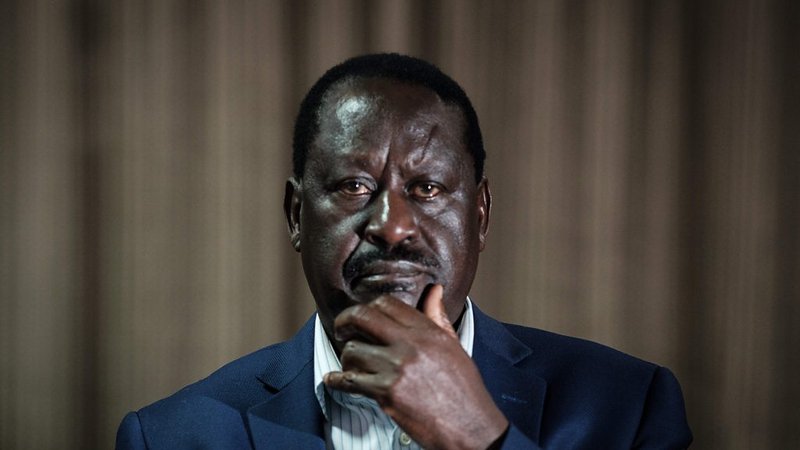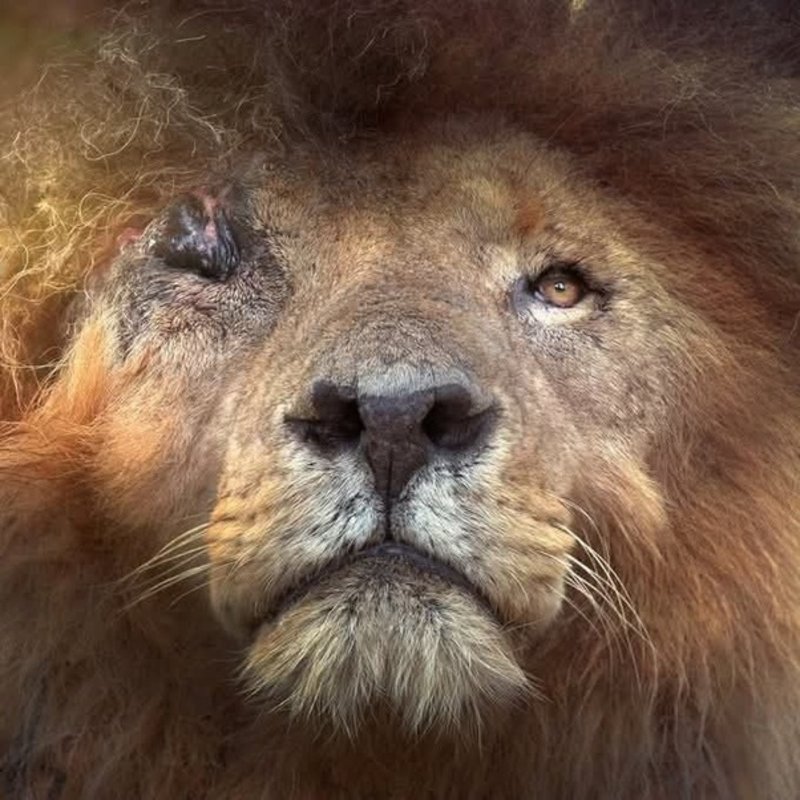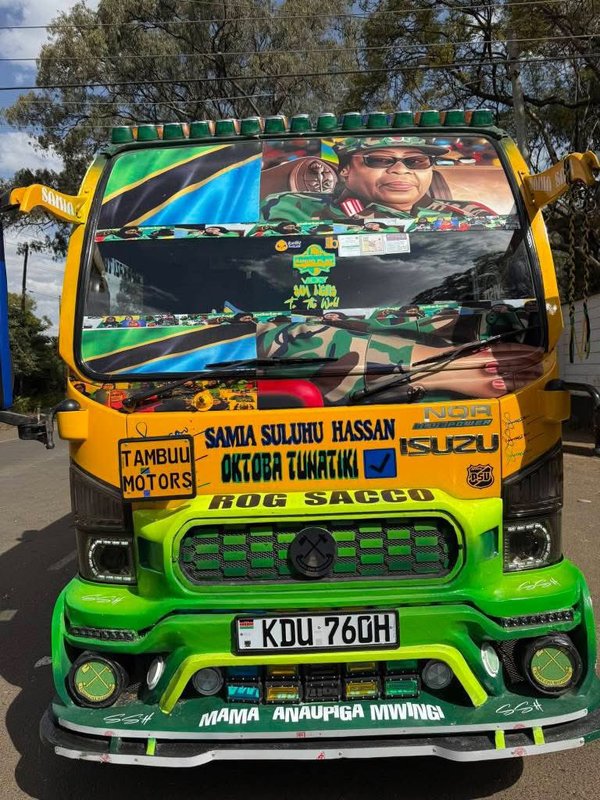In the annals of legendary figures, two names echo across different realms of power, Scarface, the fearless king of Maasai Mara, and Raila Odinga, Kenya’s political lion who has prowled the corridors of power for decades. One ruled the savanna with tooth and claw, the other conquered hearts with rhetoric and rebellion. Both carved their names in history through sheer audacity, unwavering courage, and an almost supernatural ability to survive when lesser mortals would have perished.
But here’s where their stories diverge into a tale of destiny: Scarface died like a king, alone and dignified. Raila? Well, he’s still writing his final chapter, and Kenyans are watching with bated breath to see whether he’ll exit as a hero or as a cautionary tale of a lion who forgot his roar.

The Birth of Legends (1992-2007)
Like Scarface emerging from the vast Maasai Mara in 2007, Raila Odinga burst onto Kenya’s political scene in the early 1990s with the ferocity of a young lion marking his territory. While Scarface was born with destiny written in his DNA, Raila was born into it, son of Jaramogi Oginga Odinga, Kenya’s first Vice President and the original political rebel.
But just as Scarface had to earn his stripes by facing down hyenas and establishing dominance, Raila’s political baptism came through fire and tear gas. The 1990s found him leading the charge for multi-party democracy, suffering beatings, imprisonment, and exile. Like a young lion learning to hunt, every arrest was a lesson, every detention a preparation for the battles ahead.
By 2007, the same year Scarface was establishing his legendary status, Raila had grown his political mane to full glory. His Orange Democratic Movement swept across Kenya like a wildfire, challenging the establishment with the raw power of popular rebellion. The man who once languished in Nyayo House torture chambers had evolved into Kenya’s most formidable political predator.
The irony? Both legends peaked in 2007, when democracy was young and hope was abundant. Neither knew that their greatest triumphs would also mark the beginning of their most complex chapters.
The Scars That Define Greatness (2007-2017)
Every legend bears scars, and both Raila and Scarface wore theirs like badges of honor. Scarface’s distinctive scar above his eye became his trademark, a permanent reminder of battles fought and won. Raila’s scars were invisible but equally defining: the stolen election of 2007, the post-election violence that claimed over 1,000 lives, and the haunting knowledge that his political ambitions had inadvertently unleashed demons across the nation.
Just as Scarface survived a serious eye injury in 2012 that would have killed lesser lions, Raila survived the political equivalent, the handshake with his sworn enemy, Uhuru Kenyatta, in 2018. Critics called it surrender; supporters called it statesmanship. But like Scarface limping back to his territory with damaged vision, Raila’s political sight had been altered forever.
The parallels are striking: Scarface killed over 400 hyenas in his lifetime, while Raila politically “killed” countless opponents who dared challenge his dominance. Scarface drove crocodiles from his territory; Raila drove out political crocodiles who threatened his base. The legendary lion was believed to be the only one capable of defeating adult hippos in one-on-one combat; Raila was the only politician capable of taking on the political hippos of Kenyan politics, the Mois, the Kibakis, the Kenyattas, and living to tell the tale.
But here’s where the satire becomes delicious: while Scarface maintained his dignity throughout his battles, Raila’s recent political maneuvers have left many wondering if Kenya’s lion has forgotten how to hunt.

The Decade of Dominance vs. The Decade of Delusion (2007-2017)
Unlike other lions whose reign rarely lasts more than three years, Scarface dominated multiple prides for nearly a decade. Similarly, unlike other Kenyan politicians who fade after one or two election cycles, Raila has dominated Kenya’s political landscape for over three decades, a feat so extraordinary it borders on the supernatural.
Scarface’s dominance was straightforward: fight, win, repeat. His territory was vast, his pride loyal, his enemies fearful. There was no ambiguity in his leadership, you either submitted or you died.
Raila’s dominance, however, has been more complex and, frankly, more tragic. Like Scarface, he commanded multiple “prides”, ODM, CORD, NASA, Azimio, with each coalition representing a different phase of his political evolution. But here’s where the comparison becomes brutally ironic: while Scarface never compromised with his enemies, Raila has made a career of it.
The 2013 election defeat? He took it to court like a true lion. The 2017 “stolen” election? He boycotted the repeat poll and declared himself the “People’s President”, peak Scarface behavior. But then came the plot twist that even the savanna couldn’t have predicted: the handshake with Uhuru Kenyatta.
Imagine if Scarface, after years of territorial battles, suddenly invited his greatest rival to share his hunting grounds. The other lions would have been confused, the hyenas emboldened, and the pride left wondering if their king had lost his mind. This is exactly what happened to Raila’s political coalition after the handshake.
The Great Betrayal: Sleeping with the Enemy (2018-2025)
Here’s where our tale takes a turn worthy of Shakespearean tragedy. Scarface, in his entire legendary life, never once allied with his enemies. When faced with the fierce Salas coalition in his final days, he didn’t negotiate, he commanded respect through sheer presence and dignity.
Raila? Oh, sweet Raila took a different path entirely.
First came the infamous handshake with Uhuru Kenyatta in 2018, a move so shocking that even his own supporters felt like they’d witnessed their lion king dining with hyenas. The man who had spent years calling Uhuru an illegitimate president suddenly became his dinner companion, sharing the spoils of a government he had never officially joined.
But if sleeping with one enemy was controversial, Raila’s current romance with William Ruto is political polygamy of the highest order. The same William Ruto who was Uhuru’s deputy, who oversaw the very systems Raila fought against, has now become his new bedmate in the “broad-based government” of 2025.
The irony is so thick you could cut it with a Maasai spear: Raila, who once declared “No Raila, No Peace,” has become “Any Ruto, Any Peace.” The lion who once roared defiance from the opposition wilderness has become a house cat purring in State House corridors.
Scarface would never. Even in his old age, even when facing younger, stronger coalitions, he maintained his independence. He might have lost battles, but he never lost his identity. He died as he lived, a king among lions, not a lion among sheep.
The Trek Back to Territory: Dignity or Desperation?
In his old age, Scarface defied all logic by trekking 25 kilometers back to his former territory. Wildlife experts called it remarkable; lions called it legendary. It was the return of a king to his rightful domain, a final assertion of ownership before the eternal rest.
Raila’s political trek back to “his territory” tells a different story entirely. After decades of opposition politics, his return to government corridors feels less like a triumphant homecoming and more like a desperate search for relevance. The man who once owned the streets of Kenya now needs permission from his former enemies to access the very buildings where he once protested.
The cruel irony? Scarface’s 25-kilometer journey was voluntary, dignified, and respected. Raila’s journey back to government required sacrificing his independence, betraying his base, and accepting crumbs from the very table he once sought to overturn.
While Scarface’s return to territory was seen as the majestic final act of a legendary ruler, Raila’s return to government is viewed by many as the sad compromise of a once-great leader who forgot that some things are more valuable than victory itself.
The Final Chapter: Hero or Villain?
On June 11, 2021, at the age of 14, Scarface died peacefully, a rarity for a wild lion. There were no final battles, no humiliating defeats. He left like a king, alone and with his dignity intact, leaving a legacy that made him the most famous lion in the world.
His death was poetic justice: the king who lived by his own rules died by his own terms. No coalition of younger lions brought him down. No territory was stripped from him in his final moments. He simply decided his time had come, found a quiet spot, and departed this world with the same dignity that had defined his entire existence.
And here, dear readers, lies the million-shilling question: How will Raila Odinga’s story end?
At 79, Kenya’s political lion is in his twilight years, much like Scarface was at 14. But unlike the Maasai Mara legend, Raila’s final chapter remains unwritten, and the pen is in his own hands.
Will he die like Scarface, alone, dignified, and with his legacy intact as a champion of democracy who never compromised his principles? Or will he become a cautionary tale of what happens when lions forget their roar and settle for house cat comforts?
The signs are ominous. His alliance with Ruto, the very embodiment of the system he spent decades fighting, suggests a leader who has prioritized personal relevance over principled resistance. His attack on corruption-exposing media shows a man who has adopted the very tactics he once condemned. His abandonment of the opposition role he perfected over decades indicates a politician who has forgotten what made him legendary in the first place.
Scarface’s story teaches us that true legends know when to exit the stage. They don’t overstay their welcome, they don’t compromise their core identity for temporary gains, and they certainly don’t become what they once fought against.
Raila’s current trajectory suggests a different ending entirely, one where Kenya’s greatest opposition leader becomes remembered not as the champion of democracy, but as the man who sold his soul to the very devils he once cast out.
The tragedy isn’t that Raila is old; Scarface was old too. The tragedy is that unlike Scarface, who remained true to his nature until his final breath, Raila appears to have forgotten who he is in pursuit of staying relevant.
Perhaps the greatest irony of all is this: Scarface, a wild animal, understood dignity better than Raila, a man who spent decades preaching it. The lion died as a king; the politician risks dying as a court jester in someone else’s kingdom.
As Kenyans, we watch with a mixture of sadness and anticipation, wondering whether our political lion will remember his roar before it’s too late, or whether he’ll fade away as just another cautionary tale of what happens when legends lose themselves in the pursuit of one last dance with power.
The choice, like Scarface’s final trek, remains Raila’s to make. But time, like the African sunset, waits for no one, not even legends.


